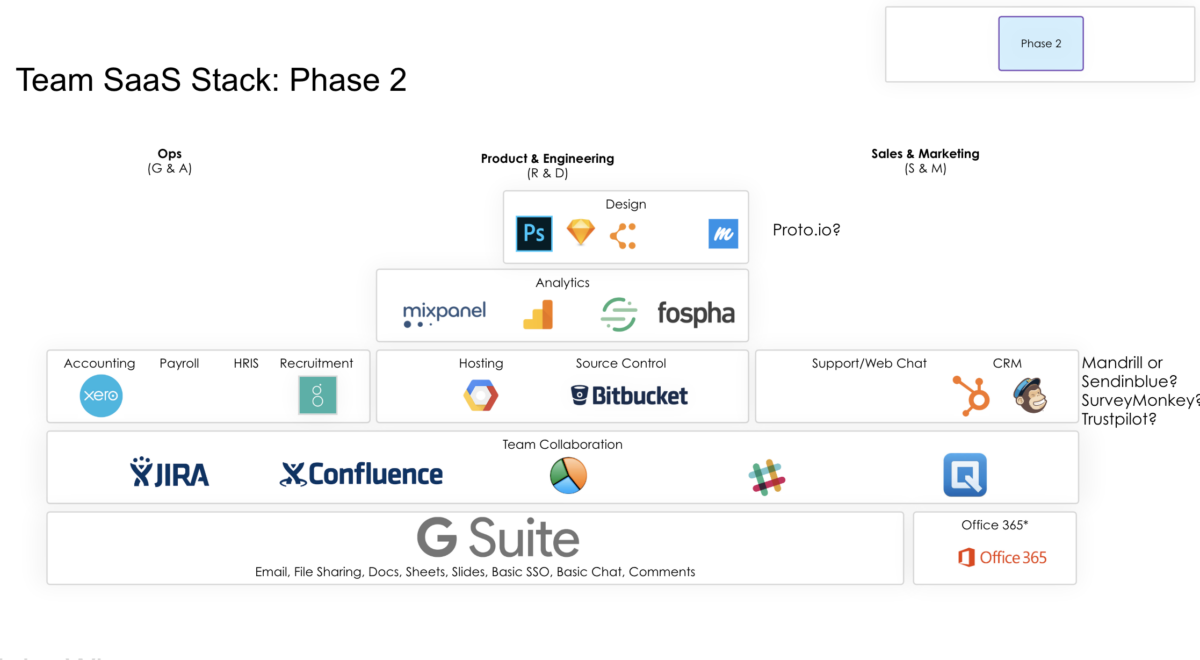So you are ready to launch an MVP or ‘open-to-all’ service? Scary, right? Preparing for launch it’s never easy. Bear in mind that no one has many users to start. However, if you have keen investors or an active board, the pressure is on. A good start tech stack is depicted in the diagram. The big difference is analytics and tools the business needs to make a success out of the launch. So a lot of new tools are added to facilitate timely and accurate product usage tracking. Finally, marketing and support tools will make or break the business so overinvest in figuring what works for you. Challenge arguments based on people’s previous experiences. (We used MailChimp at X). Also, remember to constantly review your technology stack to continuously remove legacy.
